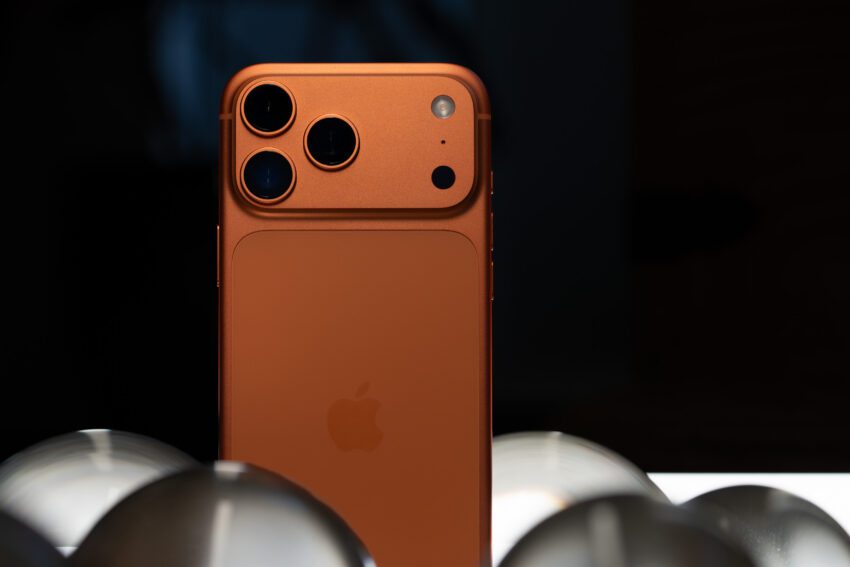
ifixit zooms in on reports of an Reports have emerged regarding the iPhone 17 Pro’s susceptibility to scratches, particularly around the camera area, prompting a detailed investigation by iFixit.
ifixit zooms in on reports of an
Overview of the iPhone 17 Pro’s Design
The iPhone 17 Pro, released by Apple, features a striking design that includes an anodized aluminum body and a distinctive camera “plateau.” This design choice has garnered attention not only for its aesthetic appeal but also for its potential vulnerabilities. The Cosmic Orange variant, in particular, has been highlighted for its vibrant color, but it appears that this beauty comes with a downside: increased susceptibility to scratches.
iFixit’s Detailed Investigation
iFixit, a well-known repairability advocate, conducted a teardown of the iPhone 17 Pro to examine the reported scratching issue. Their investigation utilized digital microscopy to capture the extent of the scratches around the camera area, revealing a concerning level of damage that was not observed in other parts of the device. The findings from iFixit suggest that the design of the camera bump may be contributing to this issue.
Understanding the Scratch Problem
According to iFixit, the scratches around the camera plateau are particularly pronounced, leading to concerns about the long-term durability of the device. The teardown video showcased images of the scratches, which were magnified to illustrate the severity of the damage. This level of detail underscores the importance of understanding how design choices can impact the functionality and longevity of a device.
Expert Insights from David Niebuhr
To gain further insight into the scratching issue, iFixit consulted David Niebuhr, an engineer and professor of mechanical engineering. Niebuhr provided a technical explanation for why the scratches are so prominent around the camera bump. He noted that the sharp edge of the camera bump, combined with uneven anodization, contributes to the visibility of the scratches. He stated, “Apple could have prevented this by making a more gradual curve and avoiding a relatively sharp corner.”
This observation raises questions about the design philosophy employed by Apple. While the aesthetic appeal of sharp lines and edges may be a design trend, it can also lead to practical issues such as increased wear and tear. The decision to prioritize form over function in this instance may have unintended consequences for users.
Implications for Users
The implications of these findings are significant for potential buyers of the iPhone 17 Pro. iFixit warns that unless users invest in a protective case, the camera plateau is likely to sustain damage over time. This is particularly concerning for individuals who prioritize the appearance of their devices, as scratches can detract from the overall aesthetic and resale value.
Repairability Concerns
In addition to the scratching issue, iFixit evaluated the overall repairability of the iPhone 17 Pro. They acknowledged that Apple has made strides in certain areas, such as incorporating a screwed-in battery, which facilitates easier battery replacement. However, they criticized the requirement for users to remove the screen for most repairs. This design choice complicates the repair process and may deter users from attempting repairs on their own.
For context, Apple has made efforts in recent years to improve the repairability of its devices, particularly with the introduction of the iPhone Air, which allows for easier access to components without the need to remove the screen. The decision to revert to a more complicated repair process in the iPhone 17 Pro raises questions about Apple’s commitment to user-friendly design.
Consumer Reactions and Market Impact
The revelation of scratching issues and repairability concerns has elicited a range of reactions from consumers and industry experts alike. Many users have expressed disappointment, particularly given the premium price point of the iPhone 17 Pro. The expectation for a high-end device is that it will not only perform well but also withstand the rigors of daily use without significant wear.
Comparative Analysis with Previous Models
When comparing the iPhone 17 Pro to previous models, it becomes evident that Apple has faced similar criticisms in the past. The iPhone 14 series, for instance, also received feedback regarding its durability, particularly with the glass back. However, the current issues with the iPhone 17 Pro appear to be more pronounced due to the specific design choices surrounding the camera area.
This raises an important question: Are consumers becoming more discerning about the durability of their devices? As smartphones become an integral part of daily life, the expectation for longevity and resilience is increasing. The backlash against the iPhone 17 Pro’s scratching issue may signal a shift in consumer priorities, where durability is becoming as important as features and aesthetics.
Apple’s Response and Future Directions
As of now, Apple has not publicly addressed the scratching issue reported by iFixit and other users. However, the company has a history of responding to consumer feedback, particularly when it comes to product design and durability. It remains to be seen whether Apple will take steps to address these concerns in future iterations of the iPhone.
Potential Design Changes
Looking ahead, it is possible that Apple may consider redesigning the camera bump to mitigate the scratching issue. A more gradual curve, as suggested by Niebuhr, could enhance both the aesthetic appeal and the durability of the device. Additionally, Apple may explore alternative materials or coatings that could provide better scratch resistance without compromising the overall design.
Conclusion
The iPhone 17 Pro’s scratching issue around the camera plateau has raised important questions about design choices and their impact on user experience. iFixit’s detailed investigation highlights the need for a balance between aesthetics and functionality, particularly in high-end devices. As consumers become more aware of these issues, it is crucial for manufacturers like Apple to prioritize durability alongside design innovation. The future of smartphone design may depend on the industry’s ability to adapt to these evolving consumer expectations.
Source: Original report
Was this helpful?
Last Modified: September 24, 2025 at 7:36 am
2 views















